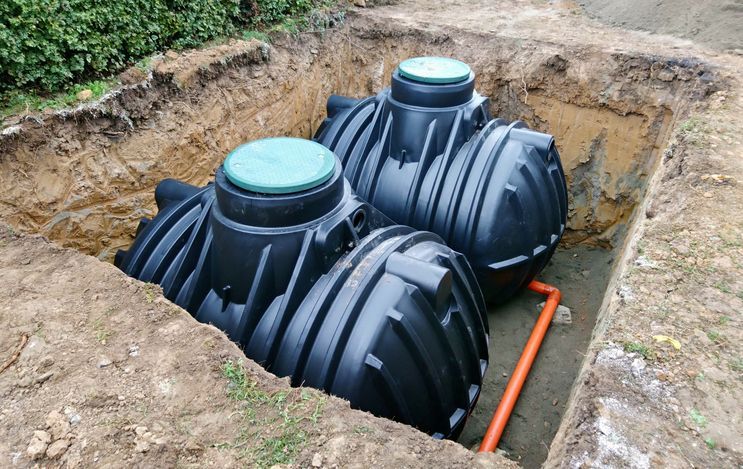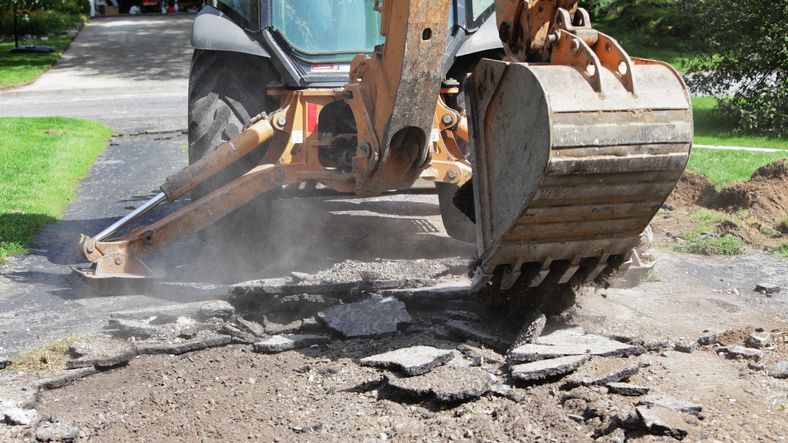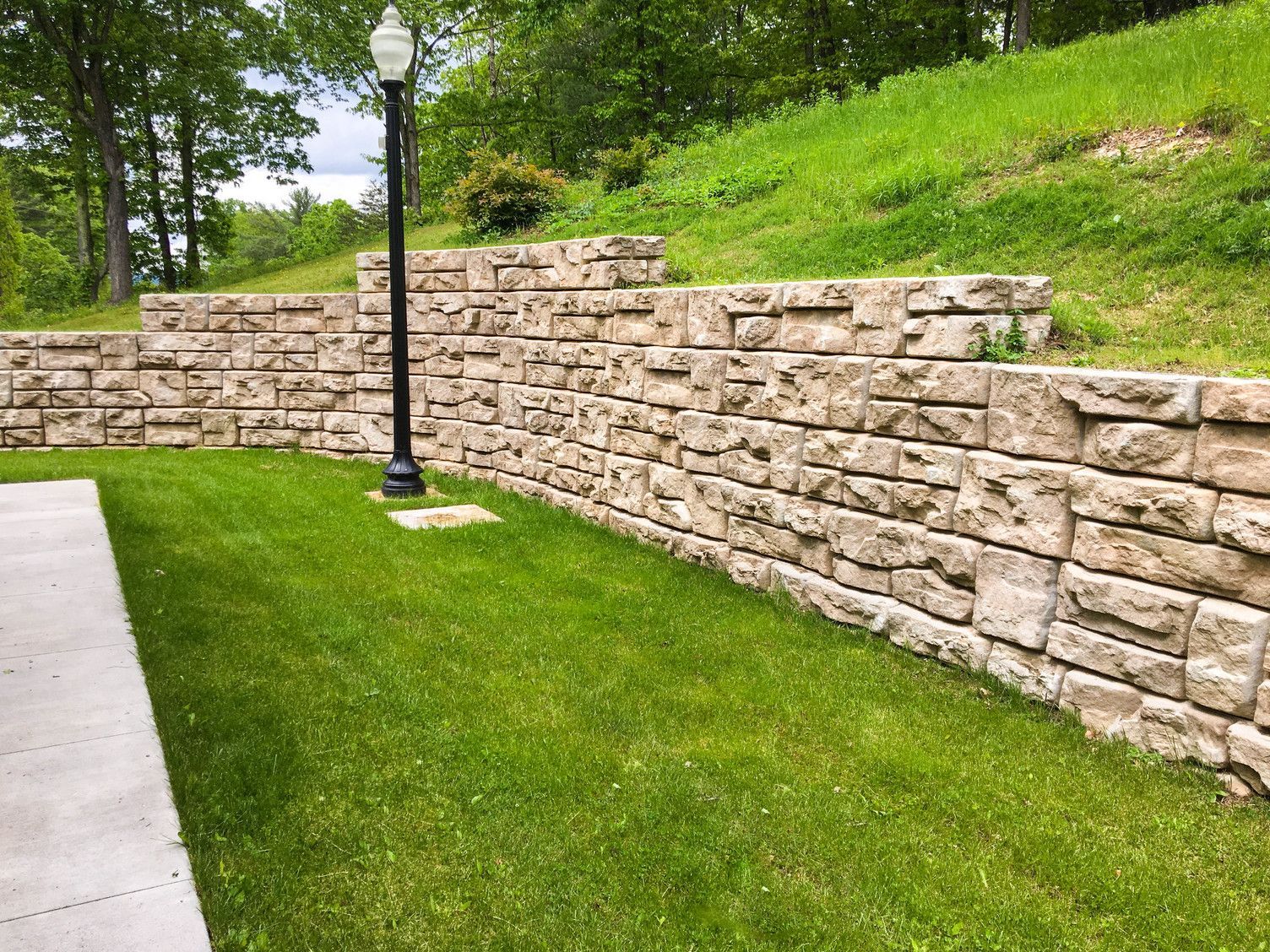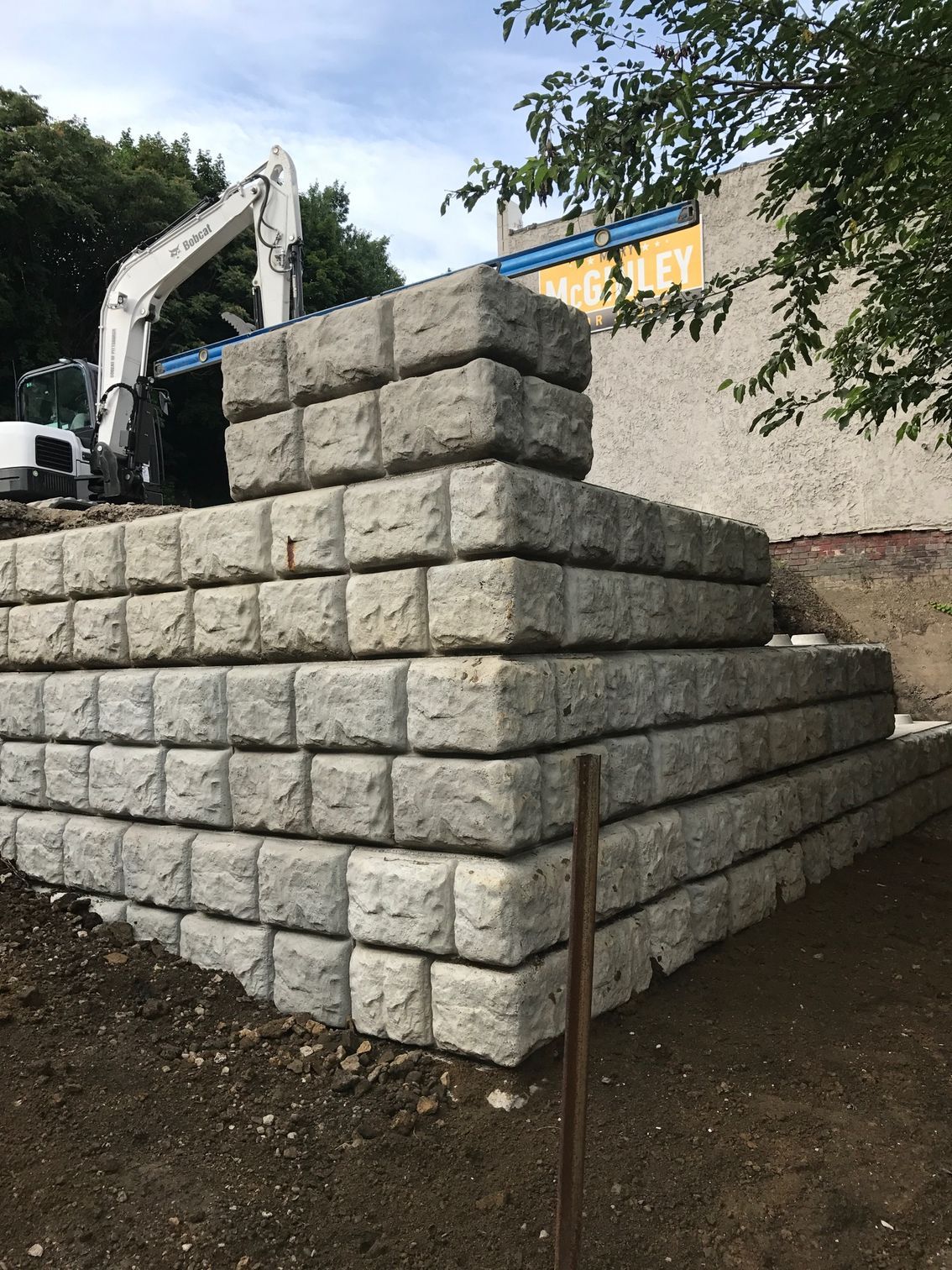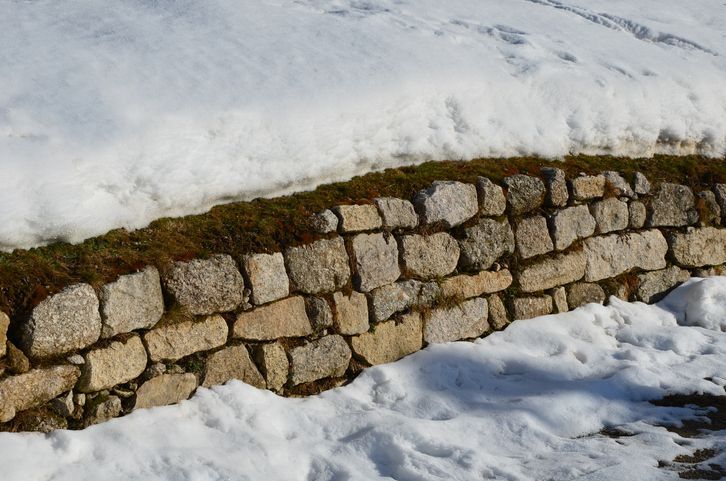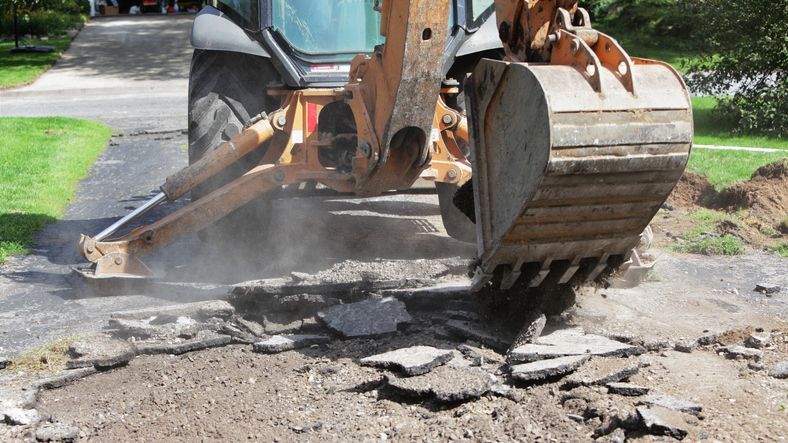When Should You Build a Retaining Wall?
Reasons You’ll Need a Retaining Wall
Keeping your home and landscape beautiful is critical. You’ve invested a lot of time and money in your home’s appearance, and with a retaining wall, there are several ways you can protect that investment. You may consider installing a retaining wall if:
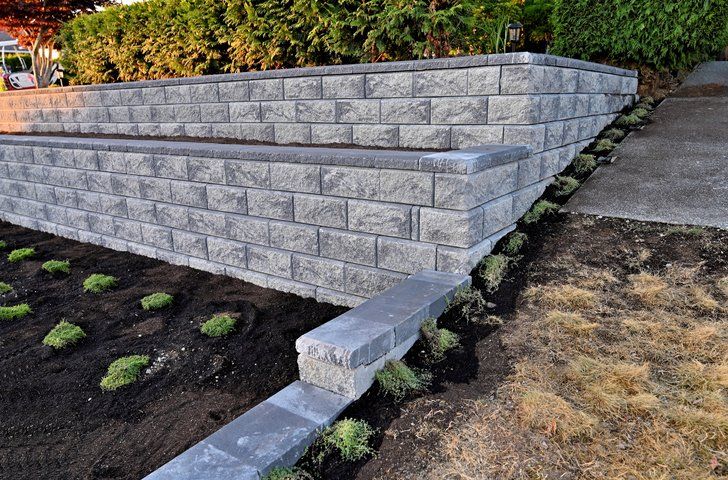 You have rainwater issues.
You have rainwater issues.
If you are looking for a way to divert rainwater and prevent it from leaking into your basement and damaging your valuables and foundation, then a retaining wall is the way to go. A retaining wall can be used to divert the rainwater away from your home and to the proper drainage areas to prevent leaks and structural damage.
You’re struggling with erosion on your property.
Retaining walls are designed to hold the soil in place and prevent it from falling down a slope and onto your home. Retaining walls can also prevent soil from falling out from under your home due to erosion. With a retaining wall, you can protect your home from the serious damage that erosion can cause.
You want to transform your unusable backyard.
If you have a steep or sloped backyard that you want to be able to use, adding a retaining all or two can help create a parking space, a sport court, or a patio space that can make your yard more functional.
Your yard could use more definition.
If you want to add some visual interest to your hillside, a retaining wall is a great solution. With a retaining wall, we can help you create terraces and level plant beds for growing vegetables or flowers. Retaining walls also allow you to create defined, usable areas in your sloped backyard.
You want to add more seating to your outdoor space.
If you want to add more seating around your outdoor space, a retaining wall is a perfect solution. You will be able to define certain areas of your outdoor space while also providing more seating for your guests.
Your current retaining wall is older or poorly constructed.
Like with any outdoor fixture, the elements can be hard on your retaining wall. If your retaining wall has been damaged, worn down, or was not installed properly, it is time to replace your retaining wall with a new, expertly constructed wall.
When’s the Best Time to Install a Retaining Wall?
If you meet one or more of the above criteria, you may be wondering when you should have your retaining wall installed. It is recommended to have your retaining wall installed prior to the winter season. There are two times of the year we recommend for retaining wall installation, which is late April and May or in October through early winter.
If you prefer to have time to design your plant beds within your new retaining walls, then you should opt to have your walls installed as soon as possible. If this is not a concern for you, you could wait to install it in autumn. When planning your installation, keep in mind that you want to give the earth ample time to settle before any major temperature shifts begin.
Additionally, installing a retaining wall prior to the winter season can help protect your plants from the harsh winter winds and can also serve as a windbreaker to help ease winter maintenance on your patio. It will also help prevent the erosion that can occur due to the melting snow and rain common in Pittsburgh during the winter.
Benefits of Retaining Walls
Installing a retaining wall can provide a variety of benefits to your home and your property. From patio space to seating areas, the possibilities of retaining walls are endless. Here are some of the main benefits of adding a retaining wall to your outdoor living space:
Make Your Outdoor Space Usable
Instead of installing a wooden deck that requires constant maintenance, consider creating an outdoor space using SRWs and pavers. With these materials, you can create a stunning raised patio that can be used to entertain friends and family. Low fencing, plant, and freestanding walls can be used to create a barrier without obstructing your view of your property.
Create Outdoor Seating
If you often entertain guests, adding seating to your patio is crucial for their comfort and convenience. With a retaining wall, you can create durable stadium or amphitheater-style seating on your patio. You can also create other seating options, such as freestanding seating, which will provide privacy and comfort to guests. Other options include two-tier couch seating designs. This seating can also be incorporated with a fire pit or a patio to create the ultimate gathering space.
Transform Your Hillside
If your yard is more a hillside than a functional yard, consider using retaining walls to create flat, usable areas. This will not only give you space for planting but will also add more visual interest to the space.
DIY or Retaining Wall Contactors
While you may be the type of person who prefers DIY projects over hiring someone, when it comes to retaining walls, a contractor is worth the investment. While doing your retaining wall yourself may save you on labor costs, it could end up costing you more money and time in the long run. When you hire a licensed contractor, you can not only save time and money, but you can rest assured that your project is completed safely and meets industry standards of quality.
By hiring a licensed contractor for your retaining wall project, you can enjoy these benefits:
Save Time and Money
With a professional, you will get years of experience in retaining wall installation. They will know the right materials to use while accounting for budget, proper drainage, current soil conditions, and more. When you DIY major landscaping projects like this, you risk making mistakes and costing yourself more in additional materials.
Stay Safe
A professional landscape contractor is licensed and trained to handle the installation of a retaining wall. From heavy lifting and other risky tasks, you could become injured while trying to install your retaining wall yourself.
Get Great Results
When trying to complete the retaining wall installation yourself, you may not get the results you hoped for. The right contracting will protect your investment in your landscape by getting the job done right the first time, providing you with a retaining wall you can enjoy for years to come.
Professional Retaining Wall Installation Pittsburgh
At J Bird’s Landscaping, our experienced team can install the retaining wall you need to protect your property and more! Contact us today to learn more!
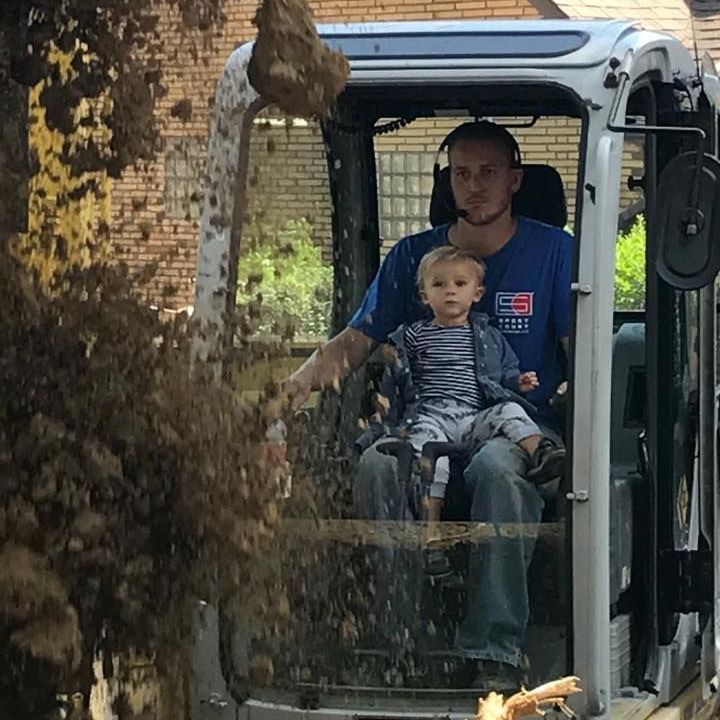
Author: Jay Nagy
Owner & Founded of J Bird's Landscaping. 18+ Years of experience in Pittsburgh lawn cutting, patio installation, trucking/hauling, French drain installation, and other landscape/design services.
More Posts from J Bird's Landscaping
